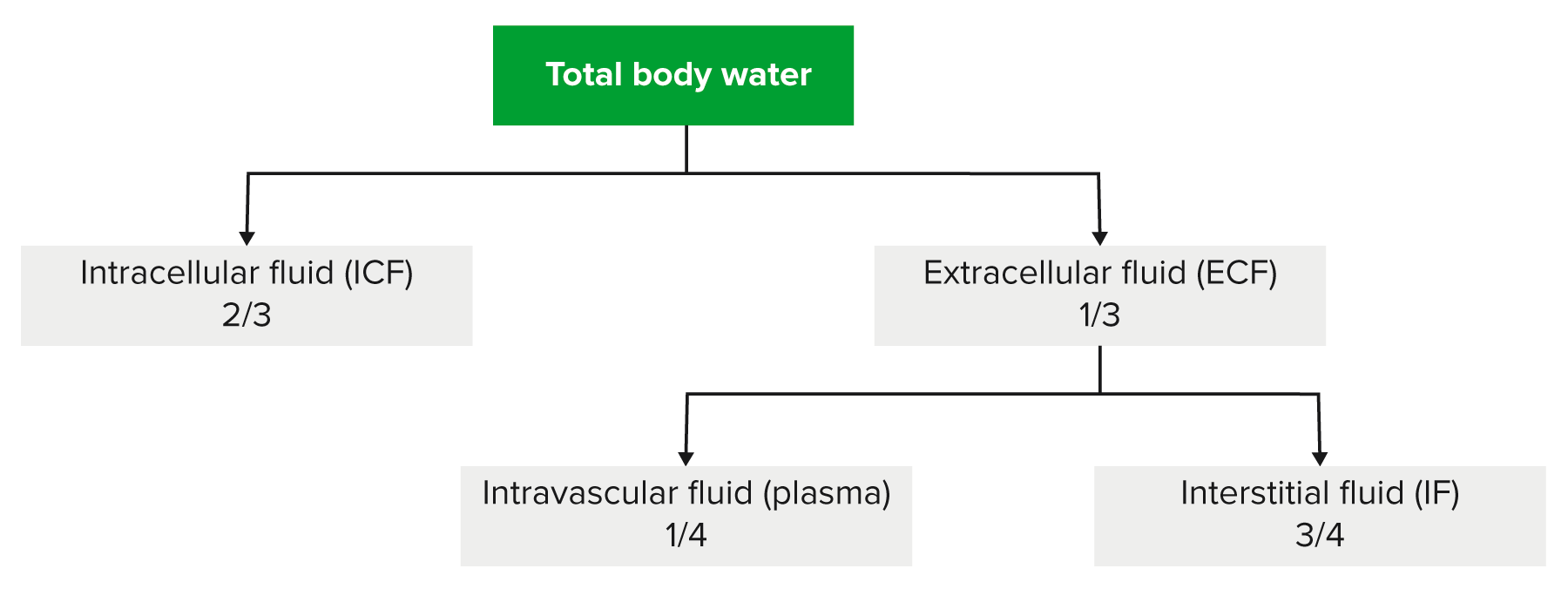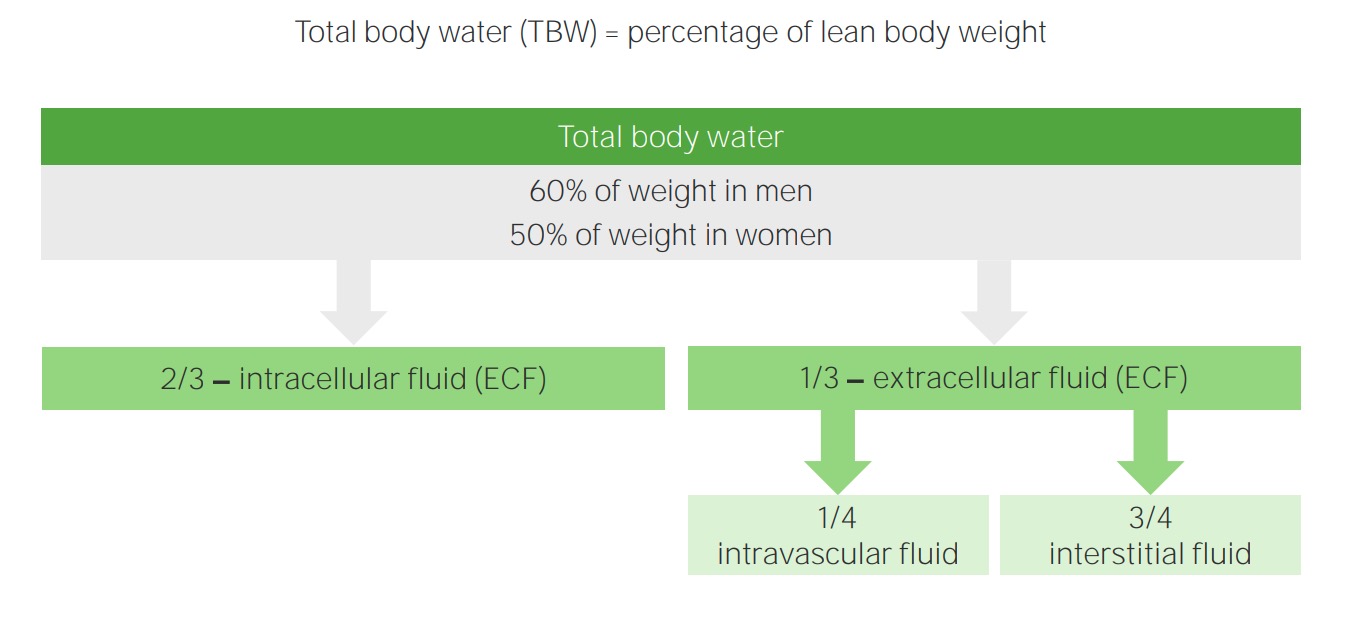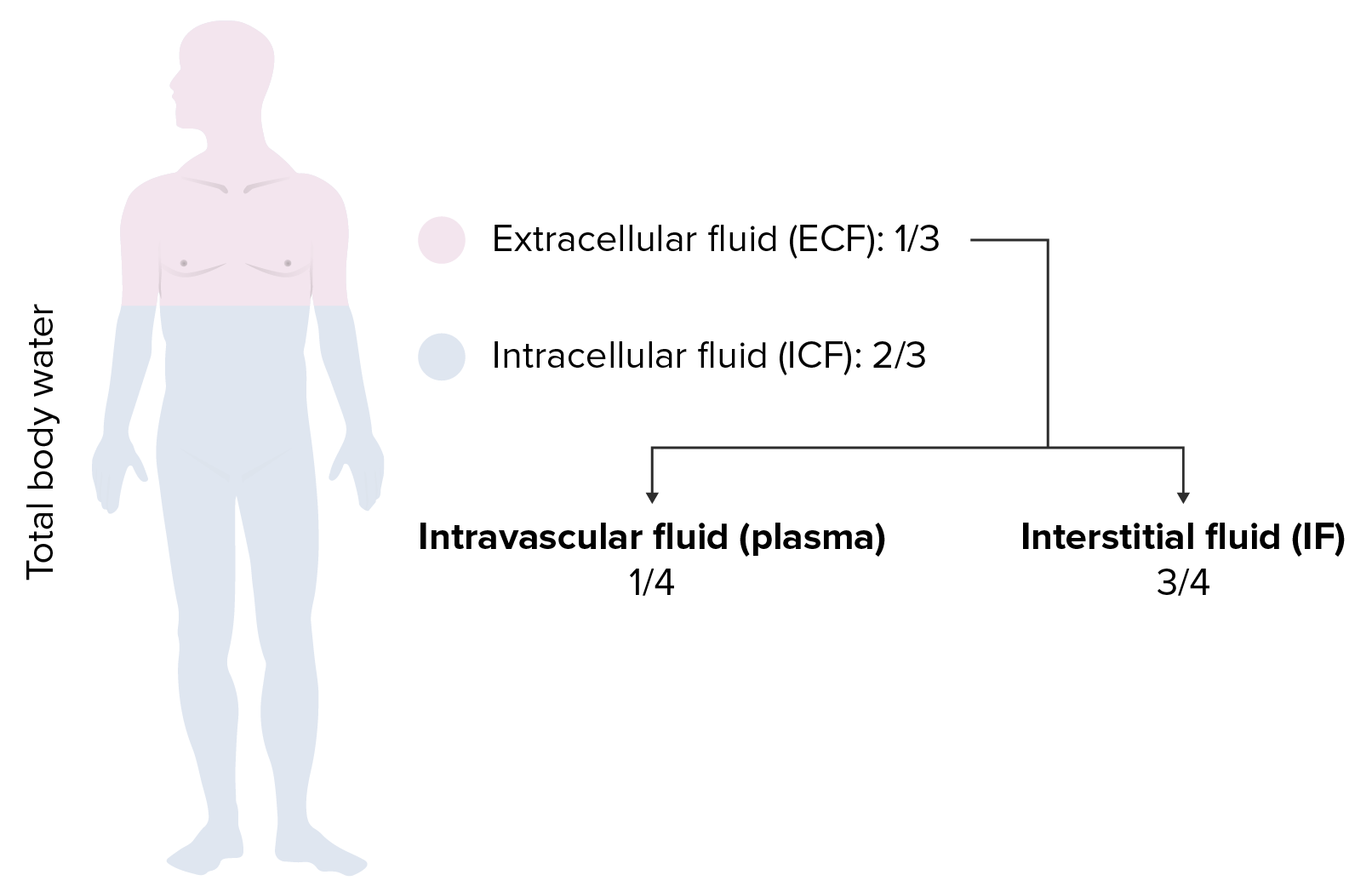Playlist
Show Playlist
Hide Playlist
Dehydration: Summary of Isotonic and Hypotonic
-
Slides Dehydration IntegratedRenalPathology.pdf
-
Reference List Pathology.pdf
-
Download Lecture Overview
00:01 Where we are here is a summary of isotonic and hypotonic fluid disorders. 00:05 We've talked about every single one of these. What you're seeing here is going to be the changes in your Darrow Yannet box. The first row that you see there is normal. What's the first thing that you're going to do? To make yourself a little bit easier, you’re going to begin with ECF volume then ECF osmolarity, ICF volume and ICF osmolarity, one, two, three, four, every single time. 00:31 What you're seeing in the second row is your isotonic. And I will then tell you when you're switching into your hypotonic changes. So here we have, well, isotonic loss. Give me an example, adult diarrhea. 00:46 Go to the last column, adult diarrhea or loss of whole blood. What kind of loss is that? Isotonic loss. What’s the only thing that’s going to be changed? Take a look at the Darrow Yannet box in the first column and all that you see is a decrease in ECF volume, the dashed line. 01:06 Next we have, I’m going to walk you through the clinical application first, excessive isotonic saline, isotonic saline. What's the only thing that’s going to happen? Take a look at the Darrow Yannet box and the only thing that you see is an increase in ECF volume. Nothing else has been affected. 01:24 We've talked about that plenty. Now, stop there. That represents your isotonic disorders. 01:30 What we're seeing in the last three rows will be all hypotonic fluid disorders. So the first one, take a look at the last column. We have Addison's disease and 21-hydroxylase deficiency. 01:45 You’re not producing any mineralocorticoid. So therefore, what are you losing? You’re losing lots, lots, lots of sodium with water. What do you call this? Hypertonic loss of sodium, right? You're losing your hypertonic loss of sodium. 02:05 So therefore, you're left with hypotonicity. Take a look at the ratio there. You find your sodium being decreased a lot more than your water. Overall, what happens to your ratio? It's decreased. 02:18 Now, this is a little tricky. Take a look at that Darrow Yannet box. First thing is you're losing fluid, ECF volume is decreased. What's my pathologies in each one of these boxes? The dashed arrows. 02:30 That's your pathologic change. Your ECF volume has decreased. Why is it that your ECF osmolarity decreased in Addison's or 21-hydroxylase deficiency? You've lost the sodium, thus the ECF osmolarity decreases. That's pretty big. And you find that there's a fluid shift into ICF. 02:50 That, ladies and gentlemen, I want you to spend a little bit of time with and make sure that you're clear as to understanding why there's an ECF volume decrease and an ECF osmolarity decrease. 03:01 Next, well, here, we have SIADH and we have compulsive water drinking. What does this mean? These last two boxes here look exactly the same. What does that mean? Well, why exactly the same? If you're going to drink too much water, or there's SIADH differentials, or the next set of differentials, right-sided heart failure, cirrhosis, and nephrotic. I want you to group all of them together right now, okay? Now, in each one of those conditions, what's happening? You're going to increase that ECF volume, aren’t you? In each one of those conditions, you’re going to increase that ECF volume. 03:41 By doing so, you're going to then decrease your ECF osmolarity in all of these conditions. 03:46 And you're going to shift your fluid into ICF. You have ICF volume increasing and you have a decrease in ICF osmolarity. Now, that’s the general scheme of things between the ICF and ECF in all those conditions. Now, let's get a little bit more technical. In SIADH and compulsive water drinking, in the ratio, what’s the only thing that you’re increasing please? The total body water. 04:11 Whereas if you then take a look at your right-sided heart failure and cirrhosis, what are you increasing more so of, your total body water. This is then called hypotonic gain of water. So, that’s where things become a little tricky on this table. If you understood this table, ultimately, with everything we've talked about, you're in fantastic shape. Anything that's going at you, you will not be confused.
About the Lecture
The lecture Dehydration: Summary of Isotonic and Hypotonic by Carlo Raj, MD is from the course Fluid and Electrolyte Balance.
Included Quiz Questions
When using a Darrow Yannet box, in what order is it suggested to consider changes to ECF and ICF volume and osmolarities?
- ECF volume, ECF osmolarity, ICF volume, ICF osmolarity
- ICF volume, ECF volume, ICF osmolarity, ICF volume
- ECF osmolarity, ECF volume, ICF volume, ICF osmolarity
- ECF osmolarity, ECF volume, ICF osmolarity, ICF volume,
- ECF volume, ICF volume, ECF osmolarity, ICF osmolarity
What is the primary determinant of volume depletion?
- Decreased total body sodium
- Decreased total body water
- Extracellular volume expansion
- Intracellular volume contraction
- Decreased serum sodium
Which of the following scenarios would result in an isolated increase in total body water?
- Syndrome of inappropriate antidiuretic hormone
- Addisons disease
- Isotonic loss of fluid
- Excessive isotonic saline infusion
- Congenital adrenal hyperplasia
Which of the following changes would you expect to see in both cirrhosis patients and SIADH patients?
- All of these changes are seen in both
- Increase in ECF volume
- Increase in total body water
- Decrease in ICF osmolarity
- Decrease in ECF osmolarity
Which of the following changes would you expect to see in patients using a loop diuretic?
- ECF volume contraction and ICF volume expansion
- ECF volume expansion and ICF volume contraction
- ECF volume expansion and ICF volume expansion
- ECF volume contraction and ICF volume contraction
- Normal ECF volume
Which of the following changes would you expect to see in both SIADH and excessive isotonic saline infusion?
- ECF volume expansion
- ICF volume expansion
- Normal ICF volume
- Normal plasma osmolarity
- Decreased plasma osmolarity
Customer reviews
5,0 of 5 stars
| 5 Stars |
|
5 |
| 4 Stars |
|
0 |
| 3 Stars |
|
0 |
| 2 Stars |
|
0 |
| 1 Star |
|
0 |






